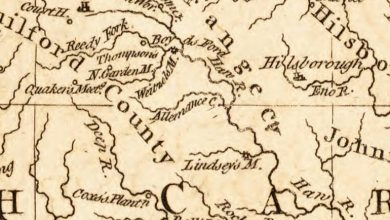The Battle of Nacaome (1st) in 1844 remains a significant event in the history of Central American military conflicts. Taking place within the framework of the Central American National Wars, it stands as a testament to the political and military turbulence of the period. With Honduras emerging as the victor, this battle marked an important point in the larger series of regional struggles that characterized the early 19th century in Central America.
Background of the Battle
In the years following the independence of Central America from Spain in 1821, the region experienced profound instability. The newly formed nations struggled to define their borders, governance structures, and economic systems, while also contending with frequent internal and external threats. The political chaos led to a series of wars, including the Central American National Wars, which were a series of military engagements fought primarily over territorial disputes and the balance of power between the newly formed republics.
The Battle of Nacaome occurred in 1844, during a particularly turbulent period for Honduras. At that time, Honduras was embroiled in conflict with its neighbors, most notably Guatemala and Nicaragua. This conflict was part of a broader regional struggle that saw multiple parties, including various factions within the countries involved, fighting for dominance and control.
The Battle
The Battle of Nacaome (1st) was fought in the city of Nacaome, Honduras, with the key military confrontation taking place on land. The battle saw the forces of Honduras clashing with the armies of several other Central American countries, including Guatemala City, Cartago (in present-day Costa Rica), Nicaragua, and Texiguat. This broad coalition of forces was driven by the larger regional struggles of the time, as each country had competing interests and territorial claims.
Honduras, at the time led by its military leaders, faced an adversary under the command of General Joaquín Rivera. Rivera, a figure whose role in Central American military history has been discussed at length, was part of the forces that aimed to challenge Honduras’ territorial integrity and political stability. Despite the formidable forces gathered by Rivera, the Honduran army emerged victorious in this confrontation.
The specific circumstances of the battle are not entirely clear, but the outcome was a decisive victory for Honduras. General Joaquín Rivera’s forces were ultimately defeated, and this setback marked a significant blow to his military career. Although the precise details of the tactics and strategies employed are scarce, the outcome of the battle further cemented Honduras’ position in the region and deterred further external intervention for the time being.
The Aftermath
Following the battle, the political situation in Honduras saw some stabilization, but the broader conflict between the Central American nations continued. The struggle for supremacy in Central America was far from over, and while the Battle of Nacaome (1st) was a significant moment for Honduras, it did not signify the end of the larger regional conflicts. Central America would continue to be embroiled in political strife and military clashes throughout much of the 19th century, as the newly formed nations fought to assert their sovereignty and define their future.
For General Joaquín Rivera, the defeat at Nacaome was a major personal and military setback. Despite his efforts, he was unable to secure victory for his forces, which ultimately weakened his influence in the region. Rivera’s defeat reflected the broader challenges faced by the Central American military leaders of the time, who often had to contend with shifting alliances and complex political dynamics.
Significance in Central American History
The Battle of Nacaome (1st) holds a special place in the history of Honduras and Central America. It serves as a reminder of the intense political and military struggles that characterized the early years of the independent nations of Central America. The Central American National Wars, which spanned several decades, were marked by shifting allegiances, territorial disputes, and the struggle for control over key political and economic resources.
The victory at Nacaome helped to solidify Honduras’ position in the region, providing a temporary respite from the threats posed by its neighbors. However, the ongoing struggles between the various Central American states made it clear that peace and stability in the region would remain elusive for much longer.
Conclusion
The Battle of Nacaome (1st), fought in 1844, stands as a critical event in the history of Central America. It was a pivotal moment in the Central American National Wars, with Honduras emerging victorious over the forces led by General Joaquín Rivera. While the battle was a significant victory for Honduras, it was only one chapter in the broader and more complex history of Central American conflict in the 19th century. This victory underscored the importance of military and political strategy in the region’s tumultuous post-independence period, and its legacy continues to influence the historical narrative of Central America today.




